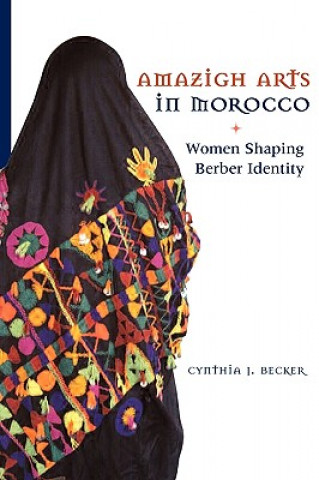
Kód: 04872956
Amazigh Arts in Morocco
Autor Cynthia Becker
In southeastern Morocco, around the oasis of Tafilalet, the Ait Khabbash people weave brightly coloured carpets, embroider indigo head coverings, paint their faces with saffron, and wear ornate jewellery. Their extraordinarily det ... celý popis
- Jazyk:
 Angličtina
Angličtina - Vazba: Brožovaná
- Počet stran: 239
Nakladatelství: University of Texas Press, 2006
- Více informací o knize

Mohlo by se vám také líbit
-

Memoir of a Berber
406 Kč -

Berber Identity Movement and the Challenge to North African States
916 Kč -

Berber Culture on the World Stage
841 Kč -
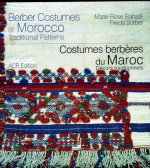
Berber Costumes of Morocco: Traditional Patterns
3746 Kč -
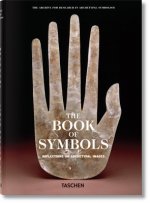
The Book of Symbols
760 Kč -

File Organization and Processing
4890 Kč -

Berbers
2180 Kč -

Brazilian Politics - Reforming a Democratic State in a Changing World
1980 Kč -

Fugitive Poets
451 Kč -

Sacred Geometry
284 Kč -

Key Issues in Education Policy
2746 Kč -

Nimzo-Indian Rubinstein
463 Kč -

Vietnam War US & Allied Combat Equipments
410 Kč -

Harry Potter and the Goblet of Fire - Hufflepuff Edition
548 Kč -

Morocco Traditional Art and Culture
909 Kč -

Moon Knight Epic Collection: Bad Moon Rising
965 Kč -

Moon Knight: The Complete Collection
893 Kč -

Among the Berbers of Algeria
988 Kč -

Printing in Plastic
1041 Kč -
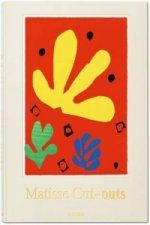
Henri Matisse. Cut-outs. Drawing With Scissors
1516 Kč -

Maori Tattooing
474 Kč -

Isambard Kingdom Brunel
410 Kč -

Sleep Sense
370 Kč -

Walt Disney Animation Studios - The Archive Series: Design
2036 Kč -

Interconnect Analysis and Synthesis
4817 Kč -

Quantum Information, Computation and Communication
2081 Kč -

Collected Letters of W. B. Yeats: Volume II: 1896-1900
13824 Kč -

Women of the United Arab Emirates
1437 Kč -

Queer Transitions in Contemporary Spanish Culture
3243 Kč -

'Steps to the Temple', 'Delights of the Muses' and Other Poems
1271 Kč -

Foucault on the Politics of Parrhesia
1681 Kč -

Castle to Castle
322 Kč -

Lower Depths
451 Kč -

Brisingr
159 Kč -

Rozum i wiara modlitwa godnosc solidarnosc
171 Kč
Dárkový poukaz: Radost zaručena
- Darujte poukaz v libovolné hodnotě a my se postaráme o zbytek.
- Poukaz se vztahuje na celou naši nabídku.
- Elektronický poukaz vytisknete z e-mailu a můžete ihned darovat.
- Platnost poukazu je 12 měsíců od data vystavení.
Více informací o knize Amazigh Arts in Morocco
Nákupem získáte 75 bodů
 Anotace knihy
Anotace knihy
In southeastern Morocco, around the oasis of Tafilalet, the Ait Khabbash people weave brightly coloured carpets, embroider indigo head coverings, paint their faces with saffron, and wear ornate jewellery. Their extraordinarily detailed arts are rich in cultural symbolism; they are always breathtakingly beautiful - and they are typically made by women. Like other Amazigh (Berber) groups (but in contrast to the Arab societies of North Africa), the Ait Khabbash have entrusted their artistic responsibilities to women. Cynthia Becker spent years in Morocco living among these women and, through family connections and female fellowship, achieved unprecedented access to the artistic rituals of the Ait Khabbash. The result is more than a stunning examination of the arts themselves, it is also an illumination of women's roles in Islamic North Africa and the many ways in which women negotiate complex social and religious issues. One of the reasons Amazigh women are artists is that the arts are expressions of ethnic identity, and it follows that the guardians of Amazigh identity ought to be those who literally ensure its continuation from generation to generation, the Amazigh women. Not surprisingly, the arts are visual expressions of womanhood, and fertility symbols are prevalent. Controlling the visual symbols of Amazigh identity has given these women power and prestige. Their clothing, tattoos, and jewellery are public identity statements; such public artistic expressions contrast with the stereotype that women in the Islamic world are secluded and veiled. But their role as public identity symbols can also be restrictive, and history (French colonialism, the subsequent rise of an Arab-dominated government in Morocco, and the recent emergence of a transnational Berber movement) has forced Ait Khabbash women to adapt their arts as their people adapt to the contemporary world. By framing Amazigh arts with historical and cultural context, Cynthia Becker allows the reader to see the full measure of these fascinating artworks.
 Parametry knihy
Parametry knihy
Zařazení knihy Knihy v angličtině Humanities History Regional & national history
750 Kč
- Plný název: Amazigh Arts in Morocco
- Podnázev: Women Shaping Berber Identity
- Autor: Cynthia Becker
- Jazyk:
 Angličtina
Angličtina - Vazba: Brožovaná
- Počet stran: 239
- EAN: 9780292721371
- ISBN: 0292721374
- ID: 04872956
- Nakladatelství: University of Texas Press
- Hmotnost: 376 g
- Rozměry: 228 × 153 × 16 mm
- Datum vydání: 01. July 2006
Oblíbené z jiného soudku
-

Hundred Years' War on Palestine
356 Kč -

Ethnic Cleansing of Palestine
378 Kč -

History of Japan
403 Kč -

Ten Myths About Israel
341 Kč -

Strange Death of Europe
433 Kč -

Decline and Fall of the Roman Empire
139 Kč -

Secret History
303 Kč -

God's Playground A History of Poland
1700 Kč -

Mayflower
388 Kč -

How to be a Victorian
302 Kč -

Plantagenets
357 Kč -

General's Son
424 Kč -

Iran: A Very Short Introduction
250 Kč -

Temples of Karnak
3798 Kč -

Cuneiform
276 Kč -

Twenty Years A-Growing
250 Kč -

China in Africa
906 Kč -

History of Witchcraft in England from 1558 to 1718
460 Kč -

Islandman
311 Kč -

Bohemian Paris
415 Kč -

Alexiad
440 Kč -

Lancaster And York
490 Kč -

Modern France: A Very Short Introduction
336 Kč -

Inside Hitler's Greece
518 Kč -

Diana: Her True Story - In Her Own Words
323 Kč -

The Fourth Turning
476 Kč -
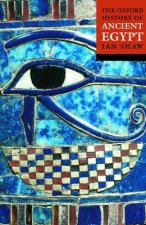
The Oxford History of Ancient Egypt
384 Kč -

Churchill: The Power of Words
433 Kč -

Palestine
564 Kč -

Korean History in Maps
706 Kč -

Great Gatsby (Wisehouse Classics Edition)
406 Kč -

Viking Way
1267 Kč -

The Thirteenth Tribe
309 Kč -

My Promised Land
378 Kč -

Vanished Kingdoms
542 Kč -

Age Of Revolution
410 Kč -

Life and Death of Anne Boleyn
585 Kč -

Coming of the Third Reich
463 Kč -

Children of Ash and Elm
487 Kč -

Europe Between the Oceans
799 Kč -

Socialism Betrayed
478 Kč -

303 Squadron
463 Kč -

Ancient Celts, Second Edition
655 Kč -

Dancing in the Glory of Monsters
400 Kč -

Battle of Britain: Luftwaffe Blitz (Images of War)
606 Kč -

Age of Confucian Rule
851 Kč -

Beyond Band of Brothers
410 Kč -

Benjamin Franklin
410 Kč -

On China
487 Kč
Osobní odběr Praha, Brno a 12903 dalších
Copyright ©2008-24 nejlevnejsi-knihy.cz Všechna práva vyhrazenaSoukromíCookies



 Vrácení do měsíce
Vrácení do měsíce 571 999 099 (8-15.30h)
571 999 099 (8-15.30h)